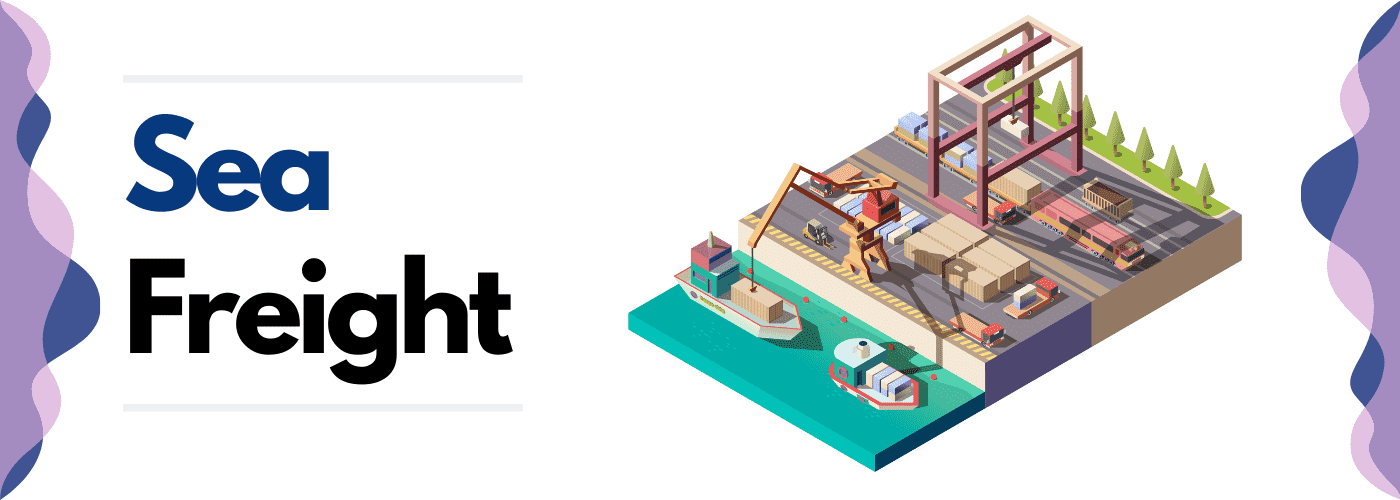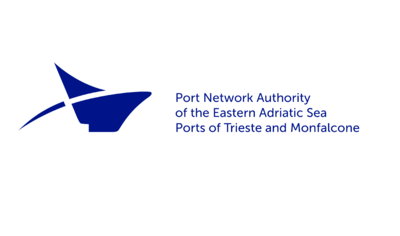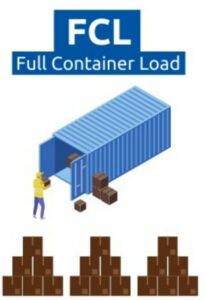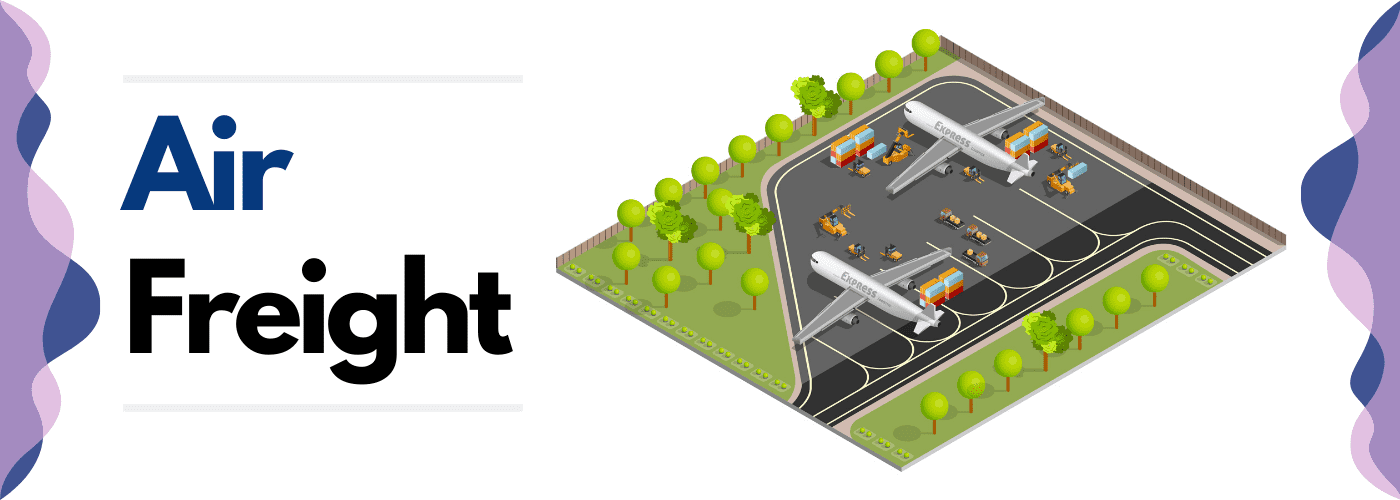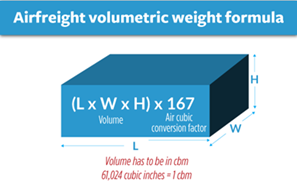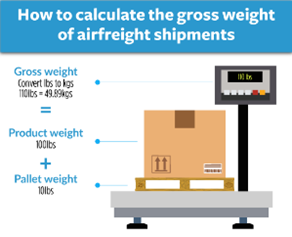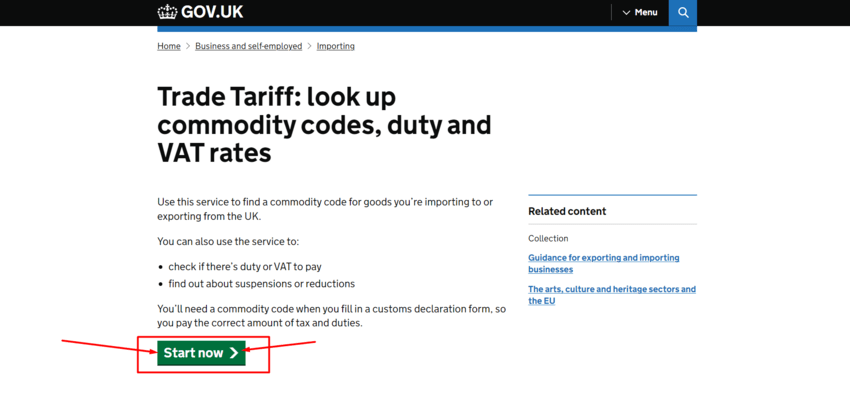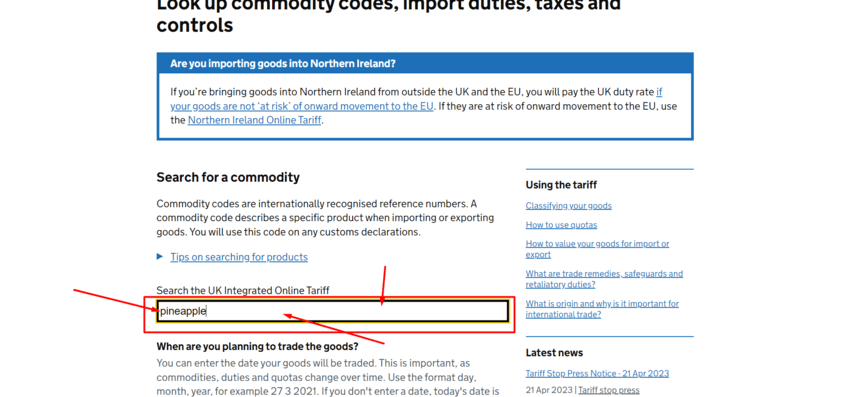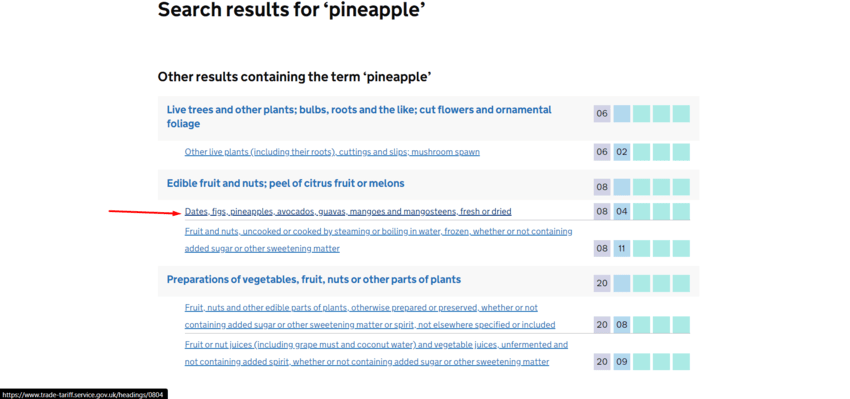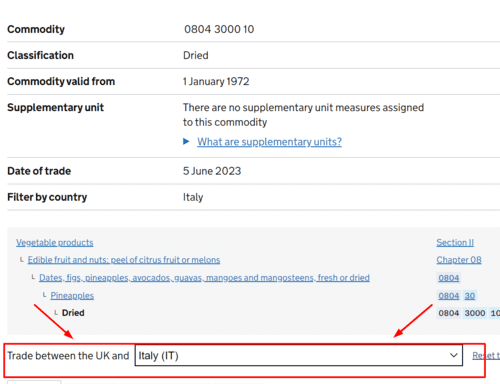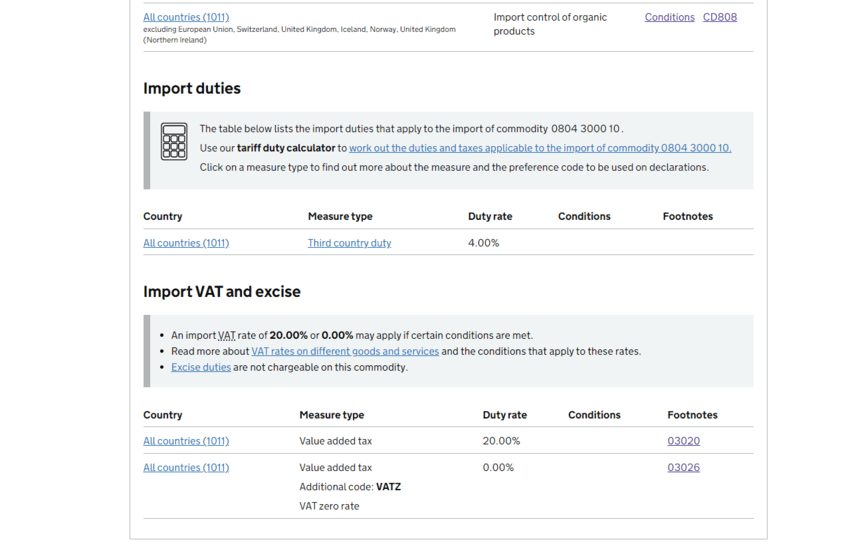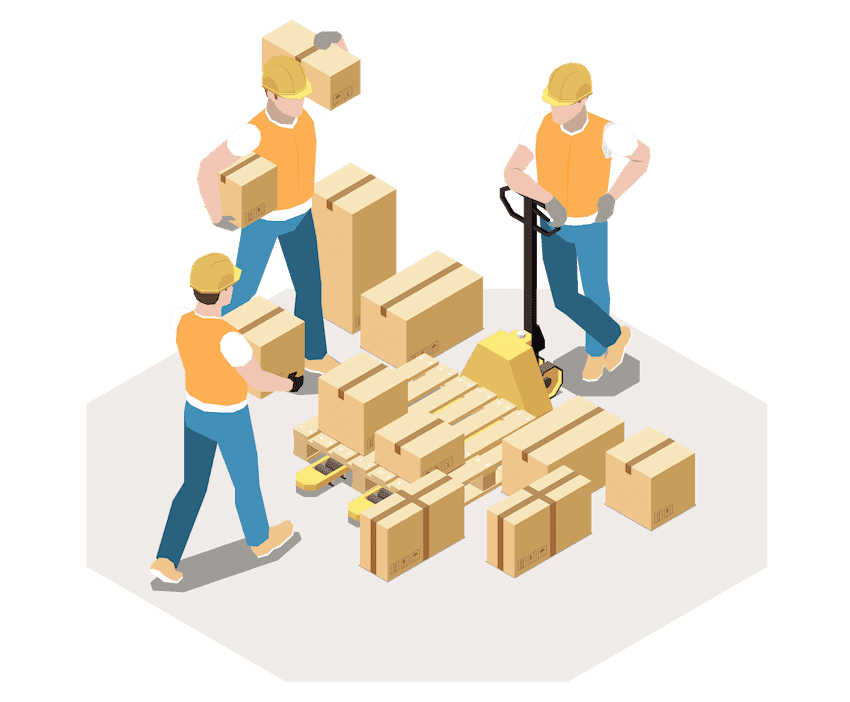Do you intend to import goods from the UK to Italy? Alternatively, why not export goods from the UK to Italy? This guide is for you!
Based on their broad understanding of the logistics industry, our team of professionals at DocShipper UK has designed this just for guide you.
Please find all the information you need below to ensure your transport goes smoothly. You will no longer be surprised by the modes of transportation, transit times, prices, and customs clearance between the UK and Italy.
Table of Contents
The best modes of transportation between the UK and Italy
The United Kingdom and Italy have strong commercial and political agreements concerning goods transportation, well-established trade routes, and efficient logistics networks to facilitate goods transportation. To support the freight relationship, various modes of transportation, such as rail freight, road freight, air freight, and sea freight, are used. Sea freight is also a popular way to transport large amounts of goods between the United Kingdom and Italy
We analyzed and compared the various means of transportation available between the UK and Italy to guide you in identifying the most appropriate mode of transportation. We'll go over these methods in greater detail later, but for now, let's focus on sea freight.
Sea freight from the UK to Italy
DocShipper Recommendation: Sea freight is the best option for you if :
- The total weight of your shipment is more than 2 CBM
- You want the cheapest way of transportation
- Your shipment is not urgent
DocShipper Note: DocShipper provides competitive rates and effective logistics coordination for all of your freight shipping needs between the United Kingdom and Italy. Our skilled professionals are standing by to provide you with seamless transportation solutions. Contact us today for a free quote and to take advantage of our dependable and professional services.
Shipping between UK and Italy
When it comes to facilitating trade and the transportation of goods between the UK and Italy, sea freight is crucial. Its popularity is largely a result of the historical track record of trade between the two nations and the capacity of ships to transport large amounts of cargo. Several shipping routes connect ports in the UK and Italy. These ports act as crucial entry points for bulk carriers, roll-on/roll-off vessels, and container ships, facilitating the transportation of a variety of goods.
Compared to air freight, sea freight is less expensive, but there are risks to take into account, such as delays and loss of goods.
Benefits of Sea Freight
Sea freight is frequently more cost-effective than other modes of transportation, particularly for large or bulky shipments. It is particularly beneficial for businesses with limited transportation budgets or that ship goods in bulk. Sea freight can transport a variety of cargo types, including dry goods, refrigerated goods, oversized cargo, and hazardous materials. Because of its adaptability, it is suitable for a wide range of industries and commodities. In general, sea freight emits less carbon than other modes of transportation. Choosing sea freight can help to reduce your shipments' carbon footprint, thereby supporting environmental sustainability efforts.
Negative aspects of Sea Freight
When compared to other modes of transport, sea freight typically has longer transit times. This can be an issue for time-sensitive shipments or perishable goods that require expedited delivery. Sea freight frequently involves multiple handling processes, such as port loading and unloading and potential transshipment. When compared to direct transportation modes such as air freight, these additional handling steps increase the risk of damage or loss. Inland locations may have limited access to ports, necessitating additional transportation and logistics arrangements to transport goods from the port to the final destination. This can increase the overall transit time.
Key ports of the United Kingdom
The Port of Felixstowe
Located on the east coast of England, the Port of Felixstowe is the largest container port in the United Kingdom and the sixth largest in Europe, with an annual capacity of over 4 million containers. It is equipped with modern terminals, automated cranes, and multimodal transport infrastructure, including rail connections to major UK cities.
In 2020, the port handled more than 3.9 million standard containers, an increase of 3.7 percent over the previous year.
The Port of Southampton
Located on the south coast of England, the Port of Southampton is the second-largest container port in the United Kingdom, with an annual capacity of over 2.8 million containers. It has modern terminals for handling containers and general cargo, as well as significant storage capacity.
In 2020, the port handled more than 1.5 million standard containers, a 3% decrease from the previous year.
The Port of London

In 2020, the port handled more than 1.5 million standard containers, an 11 percent decrease from the previous year.
Major ports in Italy
The Port of Trieste
The Free Port of Trieste, located in Trieste, Italy, on the Adriatic Sea, is the most important commercial port in the country. It is a significant hub for maritime commerce and trade, with a trade volume of 62 million tonnes.
In 2019, the port handled nearly 790,000 TEUs, an increase from the previous year.
The Port of Livorno

With more than 36 million tons of cargo moved in 2021 alone, the Port of Livorno ranks third among commercial ports in terms of the volume of cargo moved annually. Notably, it managed to handle over 29,000 refrigerated containers in 2022, which was over 11% of all full containers that passed through the port.
The Port of Genoa

The Port of Genoa is an important hub for maritime commerce and trade, with a trade volume of 51.6 million tonnes. Its strategic location and efficient operations allow it to handle a diverse range of cargo, contributing to its regional prominence.
Transit time between UK ports to Italy’s main ports
The following table summarizes the average transit times between the major UK ports and ports of Italy.
| Felixstowe | Southampton | London | |
| Trieste | 10 days | 9 days | 9 days |
| Genoa | 6 days | 7 days | 7 days |
These transit times are indicative and may vary depending on various factors.
Should I ship my goods from the UK to Italy in a groupage or a full container?
Standard container sizes are divided into three categories:
- The 40-foot HQ (High Cube), with a capacity of 76 cubic meters.
The 40-foot container, with a capacity of 67 cubic meters.
The 20-foot container, with a capacity of 33 cubic meters.
These three types of containers can be shipped by two different methods, groupage or full container.
Maritime consolidation or LCL (Less than Container Load)
LCL shipping entails the sharing of a container by multiple customers. It is used for small shipments that do not necessitate a full container and saves money on transportation.
DocShipper advice: We recommend LCL (Less than Container Load) shipping if you have less than 15 cubic meters of goods to transport. LCL allows you to share container space with other shippers, lowering costs and providing a low-cost solution for smaller shipments.
The Added Value of Maritime Consolidation
- For shipments of less than 15m3, this method is more cost-effective.
- Possibility of shipping small quantities of goods more frequently and thus saving on storage costs.Advantages of Maritime Consolidation
The Drawbacks of Maritime Consolidation
- Multiple openings in the container increase the risk of loss or damage to your goods.
- Increased transit time due to loading and unloading of goods from various customers.
FCL (Full Container Load)
The FCL shipment consists of filling a container with a single customer's goods. It is recommended for large-scale shipments of goods. The container is completely sealed and never opened.
DocShipper advice:For shipments of 15 cubic meters or more, it is advantageous to consolidate goods in a larger container. This method saves money while ensuring the safety of your goods during transit.
Advantages of FCL
- More cost-effective for shipments over 15m3.
- Safer because the container is sealed throughout the journey.
- Faster because there are usually no stops on the way.
Disadvantages of FCL
- A minimum volume of 15m3 is required to be profitable.
- Containers must often be reserved and scheduled for loading in advance, which necessitates advance planning.
Specialized maritime transport between the UK and Italy
Reefer container
A reefer container is a specialized container designed to transport temperature-sensitive cargo, such as perishable goods like fruits, vegetables, and meats. It has built-in refrigeration and insulation systems that can maintain a specific temperature range, usually between -25 °C to +25 °C, to keep the cargo fresh and prevent spoilage. Reefer containers are commonly used for the international shipping of food products and pharmaceuticals.
Roro/OOG
RoRo (Roll-on Roll-off) and OOG (Out of Gauge) containers are two different types of specialized containers used for oversized or irregularly-shaped cargo that cannot fit into a standard container. Roro containers have open sides or are completely open, allowing cargo to be rolled onto or off the container on wheels, such as cars, trucks, or heavy machinery. OOG containers are used for cargo that is too large or bulky for a standard container and usually requires special handling and securing methods, such as flat-racks or open-top containers.
Bulk
A bulk container is a specialized container used to transport bulk cargo, such as grains, coal, ores, and liquids, that are not packaged or containerized. It is designed to load and unload the cargo through a top opening or a hatch on the side, rather than through the standard doors on the end of the container. Bulk containers are commonly used for shipping large quantities of raw materials and commodities.
How much does sea freight cost between the UK and Italy?
The cost of sea freight between the UK and Italy can vary depending on several factors, such as the volume and weight of the shipment, the type of cargo, the shipping company, and the transit time.
DocShipper Tip: Get in touch with us and give us the necessary information if you'd like a precise and customized quote for your sea freight shipment. Within 24 hours, our team will quickly evaluate your needs and give you a free quote. To get started and take advantage of our affordable pricing for your sea freight needs, contact us today.
If you know the exact weight and volume of your goods, you can estimate the cost of transport yourself. Here's how to do it:
- Determine the UP (paying unit) of your shipment. To do this, compare the weight and volume of your shipment and choose the highest value. For example, if your shipment weighs 45 tons and measures 40 m³, the PU will be 45.
- Calculate the base freight by multiplying the UP cost by the number of UPs needed for your shipment. For example, if the UP cost is $600 and the UP for your shipment is 45 tons, the base freight will be $27,000.
- Add the additional charges to the base freight to get the net freight. Additional charges may include BAF (bunker adjustment factor), CSP (currency surcharge percentage), and any rebates. You can calculate the net freight with the following formula: Base freight + BAF + CSP - Rebate.
Tariff surcharges
Here is a list of some of the tariff surcharges that may apply when importing goods into the UK:
- Customs Duty: a tax applied to imported goods based on their value.
- Anti-Dumping Duty: a surcharge applied to imported goods sold at a lower price than the domestic market price.
- Countervailing Duty: a surcharge applied to imported goods that receive subsidies from the exporting country's government.
- Excise Duty: a tax applied to certain goods such as alcohol, tobacco, and fuel.
- Value Added Tax (VAT): a tax applied to the value of goods being imported.
- Tariff rate quotas (TRQs): a quota limit on the amount of a certain type of goods that can be imported at a lower tariff rate.
Airfreight from the UK to Italy
DocShipper Recommendation: Airfreight is the best solution for you if :
- The total volume is less than 2 CBM.
- The shipment is urgent.
- Your goods are precious.
DocShipper Note: If you require any information or assistance, a member of our team of professionals will get back to you within a day. We are available to give you the support and direction you require for your shipping requirements. Fill out our online form right away, and we'll be happy to assist you with your logistics needs.
Classic or express air freight
The air freight sector connecting the UK and Italy is highly developed and provides frequent and reliable services for transporting goods between the two countries. With regular flights and reliable logistics networks, air freight provides a fast and convenient option for shipping cargo across various industries. Milan Malpensa Airport (MXP). Located near Milan, serves as a major hub for cargo transportation and offers a wide range of air freight services. It operates numerous cargo flights and has connections to various destinations in the UK, making it an important gateway for air freight between the two countries
There are two different forms of air freight:
Conventional air freight: Airlines like British Airways, Alitalia, and Emirates use this option, which makes use of the cargo space on commercial aircraft, to transport cargo on their regularly scheduled flights.
Express air freight: In this second, more expensive option, items are transported by specialized freight operators such as DHL, FedEx, and UPS. The frequency of these flights and the availability of cargo space may vary depending on the season and demand.
Main airports in the UK
DocShipper Advice: Keep in mind that unforeseen circumstances, such as customs inspections or transport disruptions, can cause delays. Allow for some flexibility in your timelines, and communicate with your freight forwarder to stay informed about any potential issues. DocShipper, can ensure a hassle-free and efficient shipping process between the UK and Italy. Contact us today for personalized advice and comprehensive shipping solutions tailored to your business needs.
Benefits of air freight
- Speed: Air freight is the fastest mode of transportation, ensuring that your goods reach their destination quickly. This is particularly beneficial for time-sensitive shipments and urgent deliveries.
- Environmental Considerations: Despite being associated with higher carbon emissions compared to other modes of transport, air freight's speed can contribute to reducing overall emissions by optimizing inventory and reducing the need for warehousing.
- Reliability: Airlines operate on strict schedules, minimizing delays and ensuring the timely delivery of your goods. This reliability is especially crucial for time-critical shipments.
- Security: Airports have stringent security measures in place, offering a high level of protection for your cargo. Additionally, air freight often involves fewer touchpoints, reducing the risk of damage or loss.
Drawbacks of air freight?
- Cost: Air freight is generally more expensive than other modes of transportation, such as sea or land freight. The high cost is due to the speed, security, and convenience of air transport.
- Weight and size limitations: Air freight has weight and size limitations that may restrict the types of goods that can be shipped. Some airlines may also have restrictions on the types of goods that can be transported, such as hazardous materials.
- Environmental impact: Air freight has a higher carbon footprint compared to other modes of transportation, contributing to global warming and climate change.
- Customs and Security Procedures: Air freight involves rigorous customs and security procedures, including document verification, screening, and inspections. These processes can sometimes cause delays in transit times.
How much does air freight cost between the UK and Italy?
The cost of air freight between the UK and Italy can vary depending on several factors, including the weight and dimensions of the shipment, the distance between the airports, the urgency for delivery, and the current market rates.
Generally, air freight rates are calculated based on the volumetric weight or gross weight, with the greater of the two determining the shipping cost. The shipping cost can range from a few hundred to several thousand dollars.
How to calculate the volumetric weight of your shipment?
The gross weight of the load includes the weight of the goods and the weight of their packaging or pallet.
The volumetric weight is the volume occupied by a package, based on its dimensions and gross weight. To calculate the volumetric weight, you must first measure the dimensions of the package (length, width, and height) and then convert them into cubic meters. Then use the following formula:
Volumetric weight = (length x width x height) / 5000
(where 5000 is a standard conversion factor used in air freight)
Rail freight from the UK to Hong Kong
DocShipper Recommendation: Rail freight is the best solution for you if :
- Your total shipment is very big or heavy
- You want your merchandise to arrive quicker than with sea freight
DocShipper Note: If you require solutions for you transportation, ask a free quotation, our experts are here to help you.
Rail freight between the UK and Italy
The history of transport by train between the UK and Italy dates back to the late 19th century. The first direct railway connection between the two countries was established in 1906 with the opening of the Simplon Tunnel. This tunnel, linking Brig in Switzerland to Domodossola in Italy, provided a crucial rail link for connecting the UK and Italy through the European rail network. The popularity of rail transport has been maintained through close historical ties and technological advances in rail infrastructure.
Today, there are regular train services for freight between the UK and Italy. These trains offer a cost-effective and environmentally friendly mode of transport, particularly for certain types of cargo that are well-suited for rail transportation.
The history of rail freight between the UK and Italy reflects the continuous development and integration of rail networks across Europe, contributing to the growth of trade, tourism, and cultural exchange between the two countries.
What are the train transit times from the UK to Italy?
The train transit times from the UK to Italy can vary depending on several factors, including the specific route, the type of train service, and any potential transfers or connections along the journey. Here is a rough estimate of train transit times from major UK cities to popular Italian destinations:
- London to Milan: Approximately 12–14 hours.
- London to Rome: Approximately 16–18 hours.
- London to Florence: Approximately 15–17 hours.
- London to Venice: Approximately 14–16 hours.
- London to Naples: Approximately 18–20 hours.
Note that these are general estimates and can vary based on the train schedules, routing, and any potential disruptions. It's important to check the specific train timetables and plan your journey accordingly.
Benefits of rail freight?
- Cost-effective: Rail freight can carry a larger volume of goods at one time, reducing the cost per unit of cargo.
- Environmentally friendly: Rail freight produces fewer greenhouse gas emissions per ton of cargo transported, making it an ideal choice for companies looking to reduce their carbon footprint.
- Reliable: Rail freight is less affected by traffic congestion and weather conditions, reducing the likelihood of delays.
- Safe: Trains are less likely to be involved in accidents compared to road vehicles, and rail freight is less prone to theft and damage compared to other modes.
Drawbacks of rail freight?
- Limited accessibility: Rail infrastructure is not as extensive as road networks, which means that rail freight may not have direct access to all areas. Some destinations may require additional transportation, such as trucking, to reach the final destination, adding complexity and potentially increasing costs.
- Limited cargo types: Rail freight is well-suited for bulk shipments of certain goods, such as raw materials or heavy machinery. However, it may not be as suitable for transporting smaller or more specialized cargo that requires specialized handling or specific conditions.
- Limited flexibility: Rail freight is less flexible compared to other modes of transportation, particularly regarding last-mile delivery. Rail transportation requires infrastructure such as tracks and stations, which may not be available in all locations.
Door-to-door delivery between the UK and Italy
The term "door-to-door delivery service" describes the movement of goods, including their pickup, transportation, and delivery, from their point of origin to their final location. Because they don't have to worry about the logistics of transporting their goods, shippers benefit from this service in terms of convenience and time savings. Door-to-door delivery is frequently used for small- to medium-sized shipments, parcel deliveries, and e-commerce shipments.
You can benefit from this service by partnering with specialized businesses such as DocShipper, which will handle the entire process on your behalf. Because of our dedicated team and global partners, you can be confident that you will receive knowledgeable and excellent service.
What are the advantages of door-to-door services?
- Convenience: Door-to-door delivery is a convenient option for shippers, as it simplifies the shipping process. The carrier handles the pickup, transportation, and delivery of goods, which saves time and effort for the shipper.
- Time savings: Door-to-door delivery is a time-saving option, as it eliminates the need for the shipper to drop off the goods at a transportation hub or terminal. The carrier will pick up the goods from the shipper's location and deliver them directly to the final destination.
- Reduced risk of damage or loss: With door-to-door delivery, the carrier is responsible for the transportation of goods from the point of origin to the final destination. This reduces the risk of damage or loss during shipping, as the carrier is responsible for handling the goods throughout the entire transportation process.
- Flexibility: Door-to-door delivery provides flexibility for shippers, as they can arrange for the transportation of goods at a time that is convenient for them. This allows for greater control over the shipping process and ensures that the goods are delivered on time.
Customs clearance in the UK for goods imported from Italy
When transporting goods across international borders, importers and exporters must go through customs clearance. Customs clearance is required in the United Kingdom and Italy for all goods imported from non-EU countries. This includes submitting the import declaration, commercial invoice, packing list, and any additional documents that may be requested by the customs authorities. The process of customs clearance involves several steps, including;
- The submission of import declarations,
- The payment of duties and taxes, and
- Compliance with regulatory requirements.
In this context, it is important to understand the customs clearance process in the UK and the key requirements that importers must meet when importing goods from Italy.
DocShipper Alert: The process of customs clearance can be very complex and can make you lose precious time. To avoid this, the easiest way is to use our professional customs clearance service! We will take care of all the administrative tasks, and even the negotiations with the customs. Do not hesitate to contact us for more information.
How are taxes and duties on imports calculated?
What are the customs duties and taxes?
Customs duties and taxes are charges imposed by the government on imported goods. When goods are brought into the United Kingdom from other countries, customs duties and taxes must be paid based on the value of the goods and the applicable tariff rates.
They are calculated as a percentage of the customs value of the goods. The specific rate of customs duty depends on the classification of the goods in the UK's tariff schedule, also known as the Harmonized System (HS) code. The tariff schedule assigns different rates to different types of goods. In addition to customs duties, importers may also be liable to pay Value Added Tax (VAT) on the value of the goods. VAT is a consumption tax applied to the sale of goods and services. The VAT rate in the UK is currently set at 20% for most goods. Meanwhile, in Italy, VAT, known as Imposta sul Valore Aggiunto (IVA) applied to most goods and services, including imported goods is currently 22%, but there are reduced rates for certain goods and services.
How can I find my HS code?
You need to determine the HS code in order to learn which taxes and customs fees are imposed on your merchandise. A standardized system for classifying goods for customs purposes is called the Harmonized System (HS).
An HS code is created as follows:
How do you identify the HS code?
The simplest way to determine the HS code for your products is to visit the UK Customs website and follow the steps below.
Step 1: Click on "Start now".
Step 2: Enter the name of your product.
Step 3: Assess the outcomes and make the appropriate choice.
Step 4: The correct HS code for your product is now visible to you.
Calculate customs duties with the HS Code
Click on the HS code for your product on the same page where you found your HS Code. Then select the country of origin of the products.
You can now see what taxes and customs duties apply to your product from Italy.
For our example, we can see that for pineapple from Italy, the import duties are 4% and the VAT is 20%.
Does DocShipper charge duty?
No, taxes and customs duties are not subject to any commission for DocShipper. We act as your representative in the customs clearance process and give you access to all official documents provided by UK Customs.
The UK government will be in charge of collecting any taxes and customs duties.
Procedures and customs contact
Required documents
You must make sure you have the required documentation to abide by customs laws when importing goods into the UK. The following list offers a general overview of the documents you might need, though specific requirements may change depending on the kind of goods and their country of origin:
- Commercial Invoice: This document provides information on the goods being imported, including the seller and buyer, a description of the goods, their value, and the terms of the sale. It serves as the primary document used by customs authorities to assess duties and taxes.
- Packing List: This provides details on the goods being shipped, such as the types of items, quantities, and packaging. It may also include information on the dimensions and weight of the packages.
- Bill of Lading (for sea freight) or Air Waybill (for air freight): These documents serve as proof of shipment and provide details on the carrier, consignee, and the shipment itself.
- Certificate of Origin: This document certifies the country where the goods were produced or manufactured. It may be required to determine the applicable import duties or to comply with specific trade agreements.
- Import License or Permit: Depending on the type of goods being imported, you may need a license or permit from the relevant UK government department or agency.
- Health Certificates, Inspection Certificates, or Other Regulatory Documents: Depending on the nature of the goods being imported, you may need additional certificates, such as phytosanitary certificates for plants, veterinary certificates for animal products, or other regulatory documents.
- Import Declaration: You'll need to submit an import declaration, also known as a Customs Declaration, to HM Revenue & Customs (HMRC) using the Customs Handling of Import and Export Freight (CHIEF) system or the newer Customs Declaration Service (CDS).
It is fundamental to recognize that the list provided is not exhaustive, and that the documentation requirements can differ depending on the specific nature of the goods being imported. Seeking the advice of a customs broker or freight forwarder like DocShipper is strongly advised to ensure complete compliance and a hassle-free import process.
DocShipper Additional Services
Storage Service
Our storage facilities are designed to provide the highest level of security for your stored goods. They are accessible 24/7, allowing you to have convenient access to your items whenever necessary. To ensure the safety of your belongings, our facilities are equipped with advanced video surveillance systems, providing round-the-clock monitoring and protection.
You can visit our dedicated page: Storage Services
Transport insurance
Transport insurance will cover any damage or breakage that your goods may sustain during transit. Without insurance, you will be exposed to risks. We have negotiated with the best-certified insurers in order to provide you with the most cost-effective and secure insurance contract possible.
Visit our dedicated page: Insurance Services
Packaging service
Our well-versed team is familiar with the best practices for packaging various types of cargo, including fragile items, valuable goods, and oversized equipment. We take into account the specific needs of your products and use appropriate materials and techniques to ensure optimal protection during transportation.
More information on our dedicated page: Packaging Services
Moving service
Take advantage of our international moving service to ensure that your move runs smoothly. We offer an assortment of moving packages designed to guarantee that your needs are always met. You can save up to 30% on your moving estimate by choosing to engage with us.
Visit our dedicated page: International Moving Services
FAQ | Freight shipping between UK and Italy | Rates -Transit time - Duties and taxes
Can I track my freight shipment between the UK and Italy?
Yes, many freight shipping providers offer tracking services that allow you to monitor the progress of your shipment. You can track your shipment online using the provided tracking number or through the freight provider's customer service.
How long does freight shipping take between the UK and Italy?
The duration of freight shipping between the UK and Italy depends on the chosen mode of transport. Generally, road transport takes around 2 to 4 days, sea transport can range from 2 to 7 days, rail transport varies from 4 to 7 days, and air transport is the fastest, usually taking 1-2 days.
Can I insure my freight shipment between the UK and Italy?
Yes, it is advisable to consider freight insurance to protect your shipment against loss, damage, or theft during transit. Freight shipping providers or insurance companies can provide options for cargo insurance coverage.
How long does it take to ship freight between the UK and Italy with DocShipper?
The transit time for freight shipments can vary depending on the chosen transportation mode and the specific origin and destination points. We will provide you with an estimated transit time based on your shipment details and the selected service.
How can I get a quote for freight shipping services between the UK and Italy with DocShipper?
To receive a quote, you can contact us directly through our website or get in touch with our dedicated team. Provide them with the necessary details about your shipment, such as the type of cargo, dimensions, weight, origin, and destination, and we will provide you with a customized quote based on your requirements.
What if I have specific packaging requirements for my freight shipment?
We can accommodate specific packaging requirements based on the nature of your cargo. We also provide advice and assistance in selecting appropriate packaging materials and methods to ensure the safe and secure transportation of your goods.
How much do DocShipper services cost?
Tariffs can be a difficult concept to fully comprehend. Prices may differ from one project to another because some services are fixed and others are customized. Please contact us if you have any questions or would like a quote from one of our experts.
DocShipper info: Do you find enjoyable today's article? You might find the following articles useful for your business:
- What Are The Features Of Freight Forwarding Software?
- How to prevent yourself from scams in the freight forwarding industry?
- Freight between the UK and Switzerland CH | Rates – Transit time – Duties and taxes – Advice
- Freight between the United Kingdom and the United States | Rates – Delays – Customs clearance – Taxes
- 5 keys to scale up your supply chain business in 2023
- LCL Shipping | Groupage [Less Than Container Load – FULL GUIDE]
DocShipper | Procurement - Quality control - Logistics
Alibaba, Dhgate, made-in-china... Many know of websites to get supplies in Asia, but how many have come across a scam ?! It is very risky to pay an Asian supplier halfway around the world based only on promises! DocShipper offers you complete procurement services integrating logistics needs: purchasing, quality control, customization, licensing, transport...
Communication is important, which is why we strive to discuss in the most suitable way for you!

